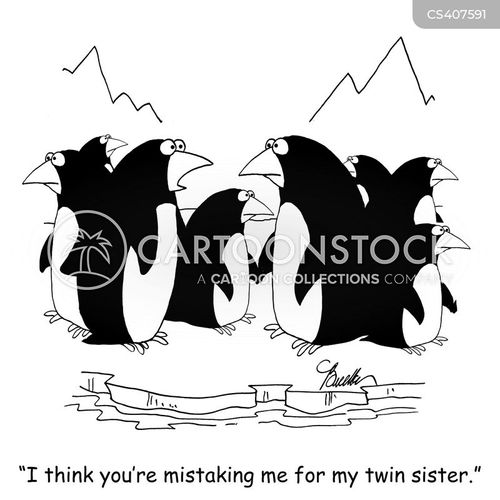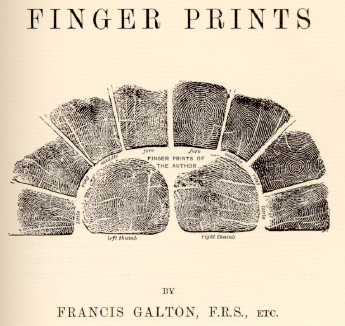 It was very early on during my first year at the Liverpool UTC, that I recognised the power of inviting students to design their own research projects. Now, as I approach the end of my original two year secondment to the UTC, with the REAL (Research Enhanced Active Learning) programme in place, I wanted to highlight another project (the first one, Jack's project was covered in an earlier post, and there will be more to follow). Before I do, let me say a few words about the concept of research itself, as defined by the OED it is:
It was very early on during my first year at the Liverpool UTC, that I recognised the power of inviting students to design their own research projects. Now, as I approach the end of my original two year secondment to the UTC, with the REAL (Research Enhanced Active Learning) programme in place, I wanted to highlight another project (the first one, Jack's project was covered in an earlier post, and there will be more to follow). Before I do, let me say a few words about the concept of research itself, as defined by the OED it is: "The systematic investigation into, and study of, materials and sources in order to establish facts and reach new conclusions"
What an unsatisfactory definition. Let's try somewhere else! If not Oxford, then Cambridge:
"A detailed study of a subject, especially in order to discover (new) information or reach a (new) understanding"
Better...or even better, from Merriam-Webster:
"studious inquiry or examination; especially :
investigation or experimentation aimed at the discovery and
interpretation of facts, revision of accepted theories or laws in the
light of new facts, or practical application of such new or revised
theories or laws"
The latter is also given by Wikipedia, in its discussion of research, and I think it covers the concept pretty well. So with a "formal definition" in hand, let's look at some examples of research and how the word is used. You will have heard someone say: "I am going to research my family history", or maybe: "I fancy a career in research"; or perhaps "use your iPads to research the topic and then write a proposal". So when Kellie and I discussed possible research projects what did she think I meant and what did I expect her to do!
 After a short discussion in which I explored Kellie's interests, we settled on the the chemical and genetic origins of fingerprints, or FPs for short (I wont list the rejected topics!). Fingerprinting was first used to successfully convict Harry Jackson for the unlawful removal of a set of billiard balls from a house in Denmark Hill, London (an area where I spent many enjoyable weekends as a young student!) in 1902. Interesting as the subject may be, at that point in our discussion, I realised I had a very superficial appreciation of FP genetics (as opposed to genetic fingerprinting!). So this was going to be a journey for both of us. And, on reflection, I realised that this was how I prepared for my PhD project over the summer months of 1980, as I earned some cash, by sweeping the changing rooms at a well known ICI plant. Getting back to Kellie and I deciding on the first steps: as the cartoon depicts, this was a case of "the blind leading the blind".
After a short discussion in which I explored Kellie's interests, we settled on the the chemical and genetic origins of fingerprints, or FPs for short (I wont list the rejected topics!). Fingerprinting was first used to successfully convict Harry Jackson for the unlawful removal of a set of billiard balls from a house in Denmark Hill, London (an area where I spent many enjoyable weekends as a young student!) in 1902. Interesting as the subject may be, at that point in our discussion, I realised I had a very superficial appreciation of FP genetics (as opposed to genetic fingerprinting!). So this was going to be a journey for both of us. And, on reflection, I realised that this was how I prepared for my PhD project over the summer months of 1980, as I earned some cash, by sweeping the changing rooms at a well known ICI plant. Getting back to Kellie and I deciding on the first steps: as the cartoon depicts, this was a case of "the blind leading the blind". A quick search on the internet led me to the work of Alan Turing and his ideas, published in 1952 on chemically induced morphogenesis, in the period just after his great achievements at Bletchley Hall (and if you haven't seen Benedict Cumberbatch's portrayal in the "Imitation Game": you must!). As an aficionado of the molecular mechanisms underpinning epigenetics, I thought this was an interesting topic and, surprisingly, one that has yet to be resolved in molecular terms. So what was the research question? After some discussions and reading around, we settled on "How is the observation that genetically identical twins have different fingerprints (see top LHS), best explained at a molecular level".
A quick search on the internet led me to the work of Alan Turing and his ideas, published in 1952 on chemically induced morphogenesis, in the period just after his great achievements at Bletchley Hall (and if you haven't seen Benedict Cumberbatch's portrayal in the "Imitation Game": you must!). As an aficionado of the molecular mechanisms underpinning epigenetics, I thought this was an interesting topic and, surprisingly, one that has yet to be resolved in molecular terms. So what was the research question? After some discussions and reading around, we settled on "How is the observation that genetically identical twins have different fingerprints (see top LHS), best explained at a molecular level".This is how the project has evolved over the last school year, as Kellie juggled time devoted to class lessons with work on her project. The first suggestion I made was that she see for herself how easy/difficult it is not only to "take" a fingerprint, but to take one that gives a clear pattern, that might potentially be used to identify or eliminate someone in a criminal situation. After some time the finger prints were pretty good and it was easy to see that they were unique, but not after quite a number of inky smudges had been collected.

Unfortunately, we were unable to find two identical twins to provide fingerprint samples, and so we had to rely on the published evidence. At this point I should make it clear that this is standard practice in Scientific Research, however there is often some overlap between the observations that you make for yourself, with those made by others. It may be that you want to assess the magnitude of a particular measurement, or you may want to alter the pH, temperature etc. (for a legitimate reason). Given the historically accepted view on the differences between FPs from identical twins, together with contemporary data, obtained with more sensitive instrumentation, we both felt it was appropriate to rely on the body of literature that exists today, since there were many, independent observations drawing the same conclusion.
 The second phase of investigation concerned the Turing hypothesis. Turing had suggested from a perspective drawn from his world of physics, chemistry and mathematics, that the differential diffusion of a soluble molecule in the amniotic sac, would reach the boundary of each of the two developing embryos at two different times. If this molecule could trigger expression of one or more genes (determinants of FP patterning) in a time dependent manner, then it would be possible for a given local concentration of such a molecule, to "fix" the levels of expression (for example) of the FP genes, in a unique way. Each embryo would then produce a distinctive fingerprint at the end of the developmentally regulated patterning process.
The second phase of investigation concerned the Turing hypothesis. Turing had suggested from a perspective drawn from his world of physics, chemistry and mathematics, that the differential diffusion of a soluble molecule in the amniotic sac, would reach the boundary of each of the two developing embryos at two different times. If this molecule could trigger expression of one or more genes (determinants of FP patterning) in a time dependent manner, then it would be possible for a given local concentration of such a molecule, to "fix" the levels of expression (for example) of the FP genes, in a unique way. Each embryo would then produce a distinctive fingerprint at the end of the developmentally regulated patterning process. Mathematically, the probability of producing a unique finger print has been discussed since Victorian times: for example, in the early, elegant work of Francis Galton FRS he discusses the metrics of human characteristics (take a look at the Galton Institute web site and the series of articles that appeared in Nature papers and Royal Society publications obtainable here). More recently (and I do not claim to have carried out an exhaustive literature search) I noticed a paper by the mathematician, Jim Morrow, from The University of Washington (Seattle) which you can read here. In it, Morrow derives the probability of finding any individual sharing identical FPs (alive or even throughout human history) to be one in 10 raised to the power 36, ie so small as to be impossible: hence the metrics, providing a good FP sample has been collected, appear to be unassailable.
Going back to the consideration of diffusion, by adding a dye into a simple aqueous vessel, and monitoring the time taken for the die to equilibrate throughout the vessel, Kellie demonstrated that a 50ul sample of dye, dispensed into 500ml, took around 15-20 minutes. Clearly the amniotic sac would not be completely still and the shape of the glass vessel, was hardly biomimetic! Nevertheless it allows an approximation to made. And, using this information Kellie asked the final question: how long does it take to express a gene in vivo? Again simplifying the system, if a gene is activated when a specific molecule exceeds a threshold level, and if following transcription, it is spliced and translated, how long does this typically take in vivo? Kellie is now drawing her experimental data together with her literature search and it is emerging that there is a good match between diffusion rates and the time scale of gene expression (even when under some form of epigenetic modulation), to support the original Turing hypothesis.
 I think this kind of project, which is perfectly simple to carry out with even the most basic level of facilities, is given a strong intellectual focus by the historical and contemporary literature relating to the core question of the mechanisms underpinning the uniqueness of fingerprints. Equally, I can't think of many other projects that draw on so many aspects of Science: Maths, Physics, Chemistry and last but not least, Biology! As we return next week for the last term before summer, Y12 students will be developing their new projects. I can't wait to see what they will come up with. Oh yes, and why are we not doing this at a much earlier stage at undergraduate level?
I think this kind of project, which is perfectly simple to carry out with even the most basic level of facilities, is given a strong intellectual focus by the historical and contemporary literature relating to the core question of the mechanisms underpinning the uniqueness of fingerprints. Equally, I can't think of many other projects that draw on so many aspects of Science: Maths, Physics, Chemistry and last but not least, Biology! As we return next week for the last term before summer, Y12 students will be developing their new projects. I can't wait to see what they will come up with. Oh yes, and why are we not doing this at a much earlier stage at undergraduate level? 

No comments:
Post a Comment